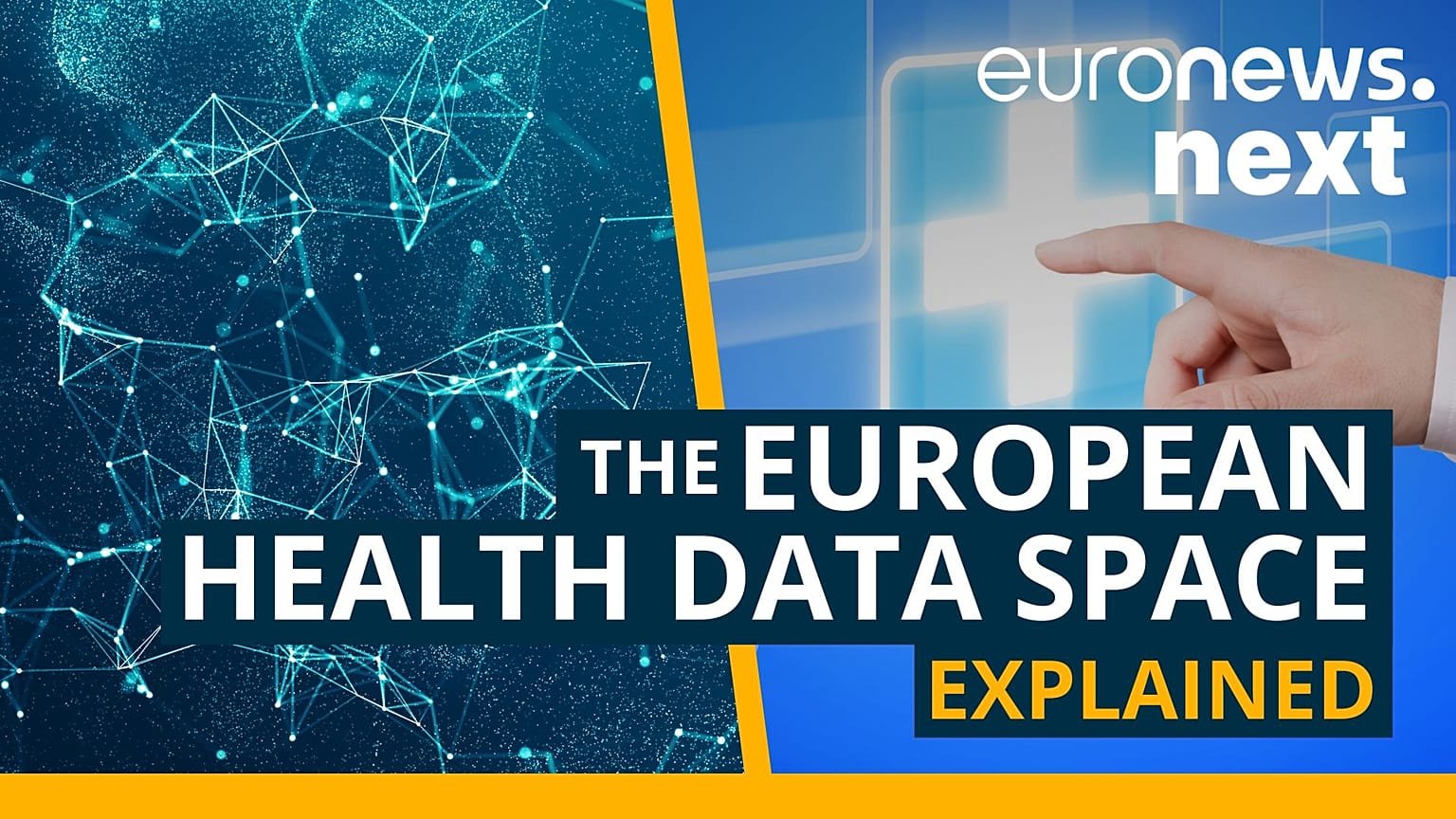The European Health Data Space could transform healthcare as we know it. In this article, we tell you what it is and what it could mean for you.
Data is one of the most valuable resources in the modern world. And although digital records are constantly improving our systems, they are also raising concerns about privacy and data security, especially when it comes to highly sensitive information about our health.
It is therefore no surprise that Europe has decided to take further steps towards a more digitised and connected healthcare system between member states. The European Health Data Space (EHDS) is possibly one of the European Union’s most ambitious projects ever undertaken, and it could be transformative for EU healthcare as we know it.
The project was first presented in March 2022 and it will take a number of years before all of its functionalities are put in place. The road will be long and full of challenges, but it could put the European Union at the forefront of big data and reshape the way patients approach their health.
So what exactly is this project about and what will it change?
Here, we break it down for you.
Press play to listen to this article
What is the European Health Data Space?
There are many things to be decided yet, but this is what we know already.
The EHDS will be an ecosystem combining rules, standards, practices and infrastructures, under a common governance framework.
It will rely on two different pillars: MyHealth@EU and HealthData@EU.
MyHealth@EU is focused on health data exchange between patients and health professionals across member states. The aim is to give European citizens, travelling or living abroad, access to the same healthcare as they would have in their home country. Some of its services are already operational in some places - we will come back to this later - and the rest will be implemented progressively across member states until the end of 2025.
HealthData@EU will be focused on what experts term the secondary use of data. Researchers, policy-makers and companies will be able to use and study patients’ medical records if they receive a permit from a health data access body that will be set up in each member state.
OK... But what will it change?
If you are a citizen
- What it means if you're travelling
One of the benefits of the EDHS is that you will be able to have immediate access to your health data from anywhere, without any cost. If you are travelling or moving to another EU country, you will also be able to share this with medical staff. This will help health professionals access key information which could save many lives.
There are already two concrete examples that will facilitate cross-border healthcare access: e-Prescriptions and Patient Summaries.
The first of these is already being used in countries such as Estonia, Spain and Portugal, and will be progressively implemented in 25 EU countries by 2025. The system allows patients to pick up their medication using an e-Prescription in other countries' pharmacies without a language barrier. A healthcare professional can simply enter a patient's electronic identity card and check the translated prescription.
"Once we are in the system, we see the list of the prescriptions made for this person, and the system automatically translates it to the Estonian language. So everything is understandable for us," explains Estonian pharmacist, Aleksandr Vares.
The cost of the medication is immediately covered or subsidised.
The second one - Patient Summary - gives healthcare professionals a detailed overview of a patient’s health in their own language, including allergies, current medication, previous illnesses, surgeries and more. This information is key to providing quality care in the event of an emergency when an individual needs care and is not in their home country. In the long term, lab results and MRI scans will also be included.
This service is already available in many EU countries, such as Spain and the Czech Republic. In both cases, their citizens’ health data can be consulted in countries like Portugal and France. Like ePrescriptions, it will be implemented in the remaining countries by 2025.
- What it means for your health
Sharing health data between European countries will allow you to receive more personalised and comprehensive care. Doctors will have a clearer overview of your health status and you are likely to receive better diagnoses and treatment, without the language barrier.
If you like products, such as smartwatches, or if you suffer from a chronic disease, this is also good news for you because the EHDS will boost innovation and research to create more tailored products.
If you have a rare disease, it could be especially useful for you. Currently, there is limited funding to investigate these types of pathologies. With the EHDS, more research could be carried out on your illness and you will be able to connect with other patients and doctors from all over Europe to share experiences.
Regarding the control you will have over this data, the European Commission explains that patients will have the possibility to opt-out of sharing their medical records and will be able to obtain information about how they are being used.
If you are a health professional:
Healthcare workers will likely see major benefits to the EHDS system because it will undoubtedly make things easier for them.
If you are a health professional, the digitisation and exchange of patients' health records will give you faster access to vital information. In addition to lessening the administrative burden and reducing costs by avoiding duplication of medical tests, you will be able to deliver better and more personalised care to any European citizen in your country and in your own language.
For instance, if you are a pharmacist, you will be able to see an ePrescription translated, in just one click.
In the case of rare diseases, specialists will be able to exchange information with other specialists across Europe in order to share knowledge and experience.
In other words, you will be able to improve the way you work and help others. Is there anything more satisfying?
If you are a researcher:
If you work in the research sector, you are likely keenly aware of how valuable health records are for scientists. Big data is essential to better understanding certain diseases and improving diagnostics and treatments.
Medical research and innovation are top priorities for the European Union, and the EHDS will give researchers access to large amounts of precise data with which to carry out their studies.
If you are part of the health industry
Currently, the European digital health market, valued at around €40 billion, faces many challenges as country-specific regulations make it a fragmented market. The EHDS could help harmonise rules and standards.
This could be a game-changer for health industry workers, as it could make it easier to enter new markets in other member states. More data will enable more innovation and the development of new and more tailored products that could help citizens better manage their health. This in turn could encourage new business opportunities.
If you are a policy-maker:
The COVID-19 pandemic is recent proof that cross-border access to health data is key to responding to health emergencies. Access to health data can also help Europe’s policymakers implement better measures to improve public health and manage healthcare systems.
Imagine if an efficient exchange of medical records between EU countries had already existed at the outset of the pandemic… How different could things have been then?
What are the risks of sharing health data? Will my medical records really be protected?
This is perhaps the greatest concern of European citizens. The European Commission has the difficult task of earning their trust and putting in place measures that ensure the security and privacy of their health information. The exchange will be regulated by national and European legislation, such as the General Data Protection Regulation.
Sharing information online, where data is a precious resource, does not come without risk. The EHDS aims to minimise this risk by anonymising medical records. This means that identifiable data will not be accessible to anyone and will be encrypted. Researchers, policymakers and companies that obtain authorisation will only be able to see pseudonymised and anonymised data.
“It’s like encrypted passwords on the Internet”, explains the scientific director of the Health Data Hub, Emmanuel Bacry. “But obviously with extremely high levels of encryption.”
The European Commission is also trying to reassure citizens by explaining that strict access conditions will be implemented and that health data will only be accessible for specific purposes that benefit both individuals and society. It also states that data will only be visible and processed in closed and secure environments. Does this mean that there will be zero risk of medical records being hacked? No, but the chances are extremely low and, if it ever happens, hackers will not know that the data came from you.
The misuse of health data by companies is also a concern for citizens. The European Commission, is therefore prohibiting the use of health data for commercial advertising, creating harmful products or raising insurance premiums. Trying to identify the data owners will also be punishable by law.
What are the challenges Europe will have to overcome for it to work?
There are many obstacles that Europe will have to navigate to ensure the functionality of the EHDS. One of the most essential challenges will be to gain the trust of citizens, as this will be key to creating a powerful and accurate database that reflects Europeans' health.
There is also another major question that Europe is grappling with: How to harmonise rules, standards, medical terms, and health systems across member states? To bring together health data from different countries, each with its own particularities and even different languages, member states will have to agree on what tools and vocabulary they will use to exchange data. Ensuring interoperability between the systems will be fundamental.

















